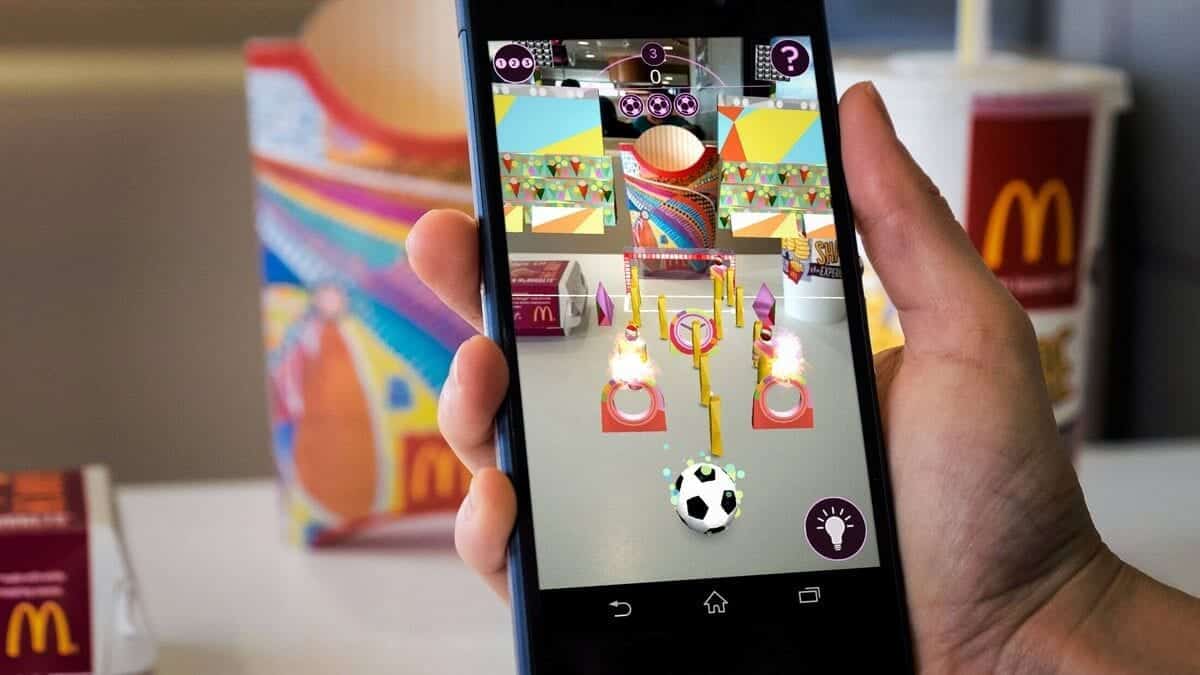The advantages of using augmented reality in packaging
Augmented reality is a tool increasingly used in marketing.
Augmented reality companies are increasingly developing more powerful and visual tools, using complex applications and large interactive billboards.
However, it is also possible to carry out AR campaigns based on the most fundamental and forgotten part of any consumer product: the packaging.
In this article, we will review different examples of augmented reality campaigns in packaging, as well as its main advantages.
Augmented reality and Bombay Sapphire: how to tell a lot in a small space
Packaging is a fantastic channel in which to carry out marketing actions.
However, changing the packaging of a product usually involves an increase in costs.
In addition, they have a clear space limitation:
if our campaign requires packaging that is too big, it will end up being annoying for the consumer.
Bombay Sapphire, for example, included a marker on the bottle label.
When focusing on the label, an animation showing the exotic character of the gin appears on the phone.
In addition, the user is offered various combinations to use Bombay Sapphire.
For this reason, augmented reality is the perfect solution to include packaging in marketing campaigns.
Simply place a small marker on the container,
as a QR code, in order to perform an action with augmented reality.
How to improve a classic? Augmented reality on PEZ candy packaging
The packaging is the first contact between the product and the potential customer.
If the consumer can interact with the package even before buying it,
is offering a unique experience that gives the brand an added value over the competition.
In addition to generating innovative experiences,
augmented reality can offer benefits for the consumer to buy the product again.
Mini-games can be offered with promotional codes, discounts,
or even the brand’s own “virtual currencies” that offer advantages to the user.
The engagement generated is even higher when the campaign is focused on a child target.
This is a very receptive audience for gamification experiences,
as with the many visual effects that can be achieved with augmented reality.
The best example is the collaboration between PEZ and Angry Birds.
By scanning a marker on the candy dispenser, users accessed a promotional mini-game.
In this way, the already legendary PEZ packaging further increases its engagement capacity.
Adaptability for any campaign: Milka and its augmented reality advent calendar.
Another advantage of augmented reality in packaging is that it is very easy to implement.
Simply include some kind of marker on the packaging, such as a QR code, and develop software that interacts with it.
Specific packaging can also be created for very specific campaigns.
Milka, for example, launched an interactive augmented reality advent calendar for the Christmas campaign.
Through his device, the user could interact with the calendar.
With each day, the augmented reality application unlocks various rewards: videos, animations and mini-games.
AR allows you to have breakfast, learn and play at the same time. The example of Kellogg’s cereals
Content generated thanks to augmented reality in packaging can serve multiple purposes.
Offering nutritional information, recipes in which to use the product
(as we have seen in the Bombay Sapphire example), as well as educational experiences.
Kellogg’s, for example, launched an augmented reality campaign with its cereal boxes.
Focusing on the box with the phone launches an application that places the user on a jungle island.
This application offers educational mini-games about the fauna of the jungle.
Fanta and its augmented reality viral filters
Augmented reality in packaging also enables the creation of experiences that are easy to share and viralize.
This type of strategy responds to the natural impulse people have to share their experiences.
The great expansion of social networks has also normalized the sharing of our daily experiences.
Along these lines, Fanta is activating an augmented reality marketing campaign with its bottles.
By scanning them, users unlocked up to 12 AR photo filters.
Users could share these photos on their social networks and create a unique Fanta drinking experience.
The importance of this type of campaign is that the content is generated by the users themselves.
This gives the campaign great credibility and the potential to go viral,
since the public trusts what their friends tell them on social networks more than what any brand tells them.
How to make the best use of resources? Pringles and its mini-games in augmented reality
Running an augmented reality campaign on packaging doesn’t have to cost a lot of money.
Increasingly, augmented reality companies are offering opportunities to make the most of available resources.
The main factor that makes this type of campaign so economical is that the base is the packaging itself.
Packaging is an essential part of the product that was already there.
There is no need to create specific merchandising, or to place interactive posters in strategic locations.
Pringles, for example, developed an AR application that would run when focusing on the logo of its iconic packaging.
This application launched mini-games in which the packaging itself was the tool to play.
From TwoReality we continue to create the best content and applications for different devices. Tell us about your project.




